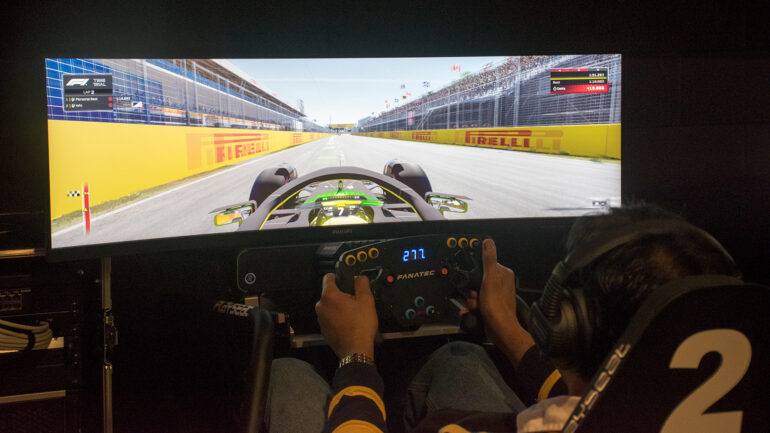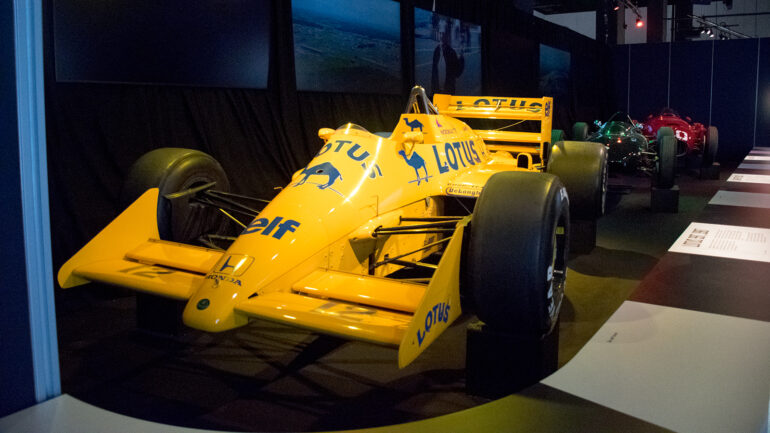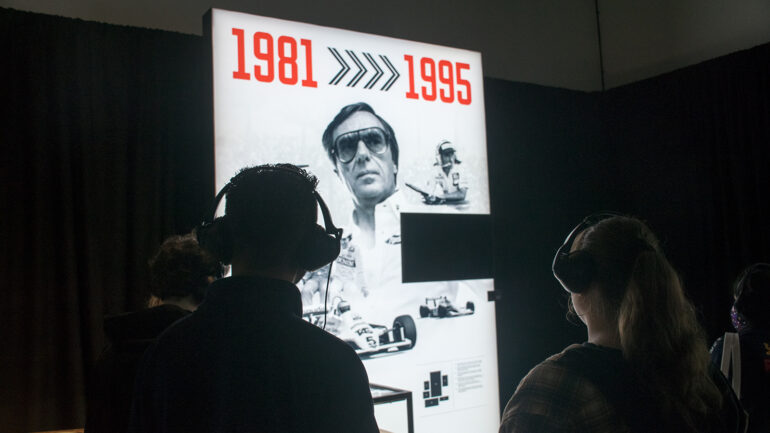The roar of Formula 1 engines may have not echoed through the streets yet, but Toronto has found a unique way to celebrate the sport.
The Formula 1 exhibition, which runs from May 3 to July 14, transformed the Lighthouse ArtSpace on Yonge Street into an immersive haven dedicated to the world of F1 with a promise of being an immersive experience for fans of all levels.
Spread over 20,000 square feet, the six themed rooms showcase iconic Formula 1 race cars, historical artifacts from 1887 to 2023, and exclusive video interviews with legendary teams and personalities.
This Toronto debut marks a significant moment for North America as Canada annually hosts a Formula 1 race in Montreal at the Circuit Gilles Villeneuve.
William Cocchio, an avid fan and a retired teacher, thinks the exhibition has been introduced at the right time.
“I don’t think the market was there in North America five years ago for this kind of event, but the demographic coming or going to the races has changed quite a bit since then,” Cocchio said.

Racing fans can experience first-hand what it's like to drive an F1 car via the simulator. Photo credit: Akhil Dalvi
“I first attended a race in the ’60s and then went to two races in Montreal around 2008 or 2012,” he said. “So, things have definitely changed in the last 10 years or so.”
The exhibition’s carefully curated collection includes race cars like the 1987 Lotus 99T driven by Ayrton Senna, the 2020 Haas VF-20 driven by Kevin Magnussen and Roman Grosjean, Graham Hill’s first championship-winning car, the 1962 BRM P578 and the 1955 Lancia D50.
The exhibition doesn’t just showcase the machines. Visitors can explore galleries like “At Shutter Speed” which showcase stunning photographs highlighting the excitement and energy from the Canadian Grand Prix in Montreal from 2014 to 2019.
Focusing on the human and safety aspects of the sport are the exhibits “Fallen Heroes” and “Survival” where the former shines a light on drivers who sacrificed their lives in the pursuit of success.
The latter exhibit contains the remains of Romain Grosjean’s race car after a terrifying 150 m.p.h. crash that resulted in an inferno and his survival through that ordeal.

Formula One's championship-winning race cars from the 1980s, 1960s and 1950s. Photo credit: Akhil Dalvi
Catherine Cocchio, who attended the exhibition with her husband William, said all the exhibits were informative and detailed.
“There’s an exhibit about the pandemic which showed how they adjusted some of their technology to create masks for hospitals which was really relevant,” she said.
“I think a lot of people think that Formula One is for rich people,” Catherine said. “No, it’s not as it has an impact on everybody, even though you may not know it.”

Close to 100 race helmets can be viewed at the "Drivers and Jewels" exhibit. Photo credit: Akhil Dalvi
Other attractions from the exhibition include the “Design Lab’’ which highlights how F1 teams design and manufacture each season’s new car, 10 racing simulators, five race car suits, 97 helmets, 39 trophies and the 3D interactive steering wheel.
For die-hard Formula 1 fans or those just getting to know the sport, the exhibition showcases the evolution of the sport in the last century.


